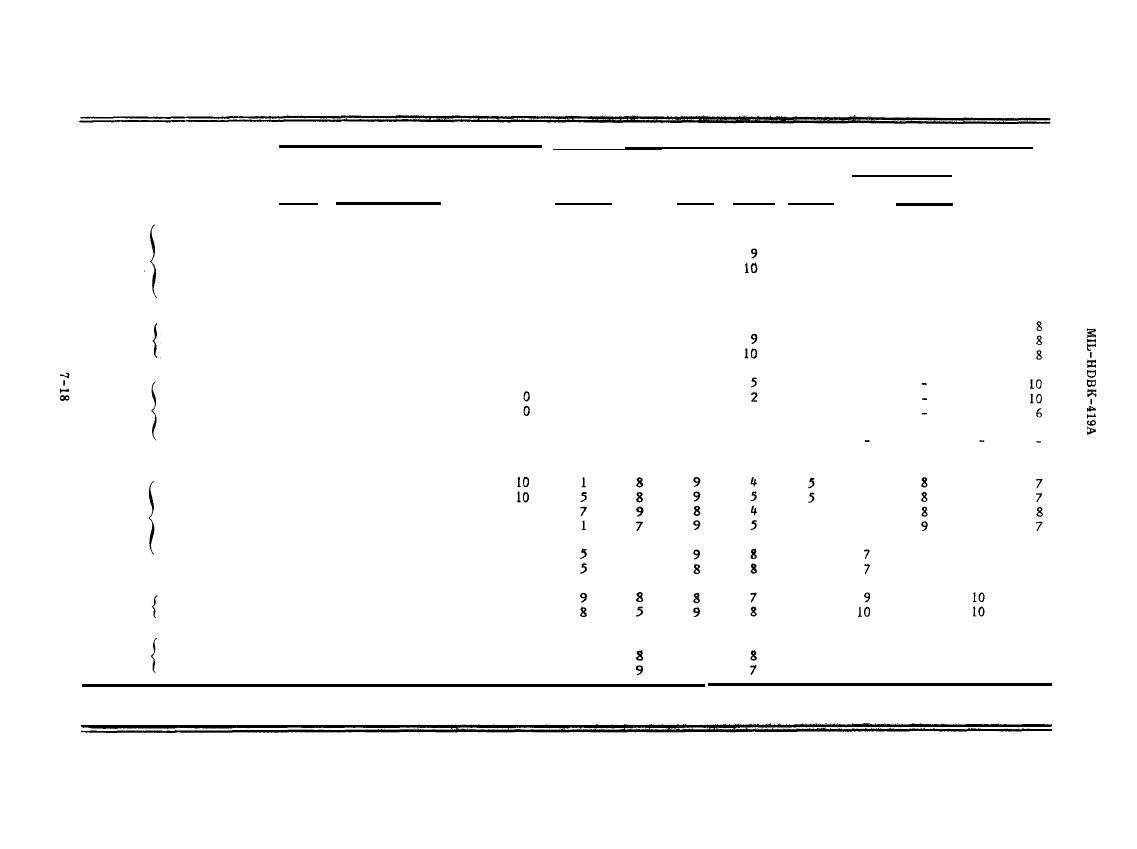

Custom Search
|
|

|
||
 Table 7-2
Ratings of Selected Bonding Techniques*
Thermal
- hemical-
C
Mechanical
Exo-
Con-
Screws
Gas or thermic
Spot
ductive
Twisted
Wire
Braze Arc Weld Weld
Weld
Adhesive
Crime
Bolts
Rivets
Clamps
Wire
Terminal Wires
Nuts
Low Resistance
9
10
10
10
10
3
9
9
9
8
9
9
9
9
Electrical
Stability
10
10
10
10
10
7
8
9
5
7
9
5
8
Properties Voltage Drop
10
9
10
10
10
5
9
9
8
8
9
5
8
Current
Capacity
5
10
10
10
9
1
9
9
9
8
9
9
8
9
Pulloff Force
8
10
10
10
10
1
9
9
9
9
3
10
2
10
Mechanical Low Creep
9
10
10
10
9
5
9
8
2
3
8
6
10
10
9
Properties Strength
10
7
4
9
8
4
5
9
Solid Wire
10
10
10
10
10
10
10
10
9
10
9
9
Conductor Stranded Wire
9
8
9
9
9
10
9
2
9
Aluminum Wire
2
Applica-
5
1
8
2
8
4
9
9
4
1
Bus Bars and
bility
9
9
Structures
8
8
8
6
9
10
10
7
7
High Tempera-
3
9
10
10
ture
5
7
10
9
10
10
Low Temperature
8
7
10
Environ-
Thermal Shock
8
9
10
10
2
5
2
mental
Vibration
6
10
10
7
9
4
1
2
Corrosive
Atmosphere
9
10
10
10
10
6
3
4
9
8
9
10
10
Aging
10
10
8
7
8
7
8
Cost
Tooling
7
4
3
4
4
10
10
10
Process
Economy
6
5
5
5
5
10
10
10
Accessi-
Method Needs
bility in
Little Space
4
8
5
5
8
9
8
10
9
9
9
8
Assembly
Ease of Repair
8
6
5
9
5
9
9
10
9
9
10
10
Source: Adapted from Reference (7-8)
|
 
|
|
 |
||